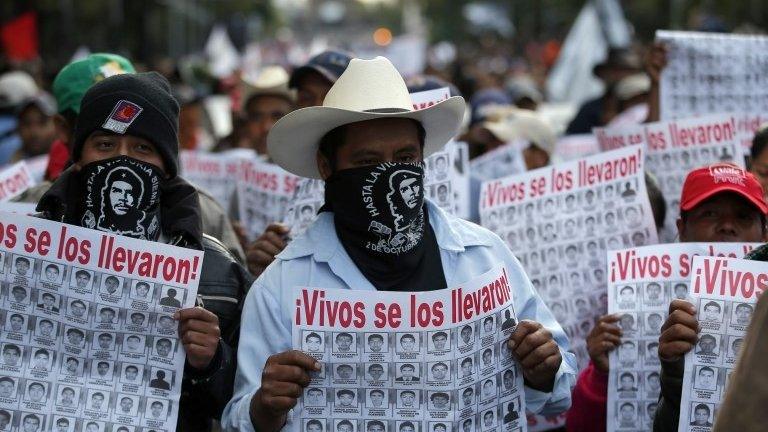Mexico missing students: Anger and frustration in Iguala
- Published
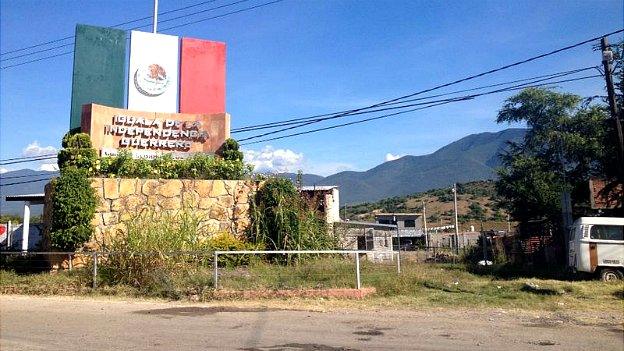
Students in Iguala are demanding answers to what happened to their friends
Iguala prides itself as the birthplace of the Mexican flag.
Dotted around the town are murals of the standard of the Army of the Three Guarantees from the country's war of independence, when generals Agustin de Iturbide and Vicente Guerrero joined forces against the Spanish in 1821.
Today, the tricolour of the modern Mexican flag over the Municipal Palace in Iguala is blackened and charred. In the palace's central patio is a mound of damaged desks and chairs, plasterboard and ash-covered filing cabinets. The floor is strewn with papers and broken computers.
It is the debris of the violent protests on 22 October when furious student teachers demanding answers on the whereabouts of 43 missing friends, feared dead, descended on local government offices with Molotov cocktails.
These burnt-out rooms were once the seat of power of Jose Luis Abarca, the disgraced former mayor of Iguala arrested this week with his wife, Maria de los Angeles Pineda, in Mexico City.
Officers arrested
His temporary replacement, Oscar Antonio Chavez, visiting the offices to view the damage, wouldn't be drawn on his predecessor's alleged role in the disappearance of the students in September at the hands of local police.
"We are not [criminal] investigators," he says, over the sound of breaking glass and workmen's sledgehammers.
"We are focused on making sure this administration doesn't fall as some people - many people - had hoped. All those who have attacked us have only made us stronger."
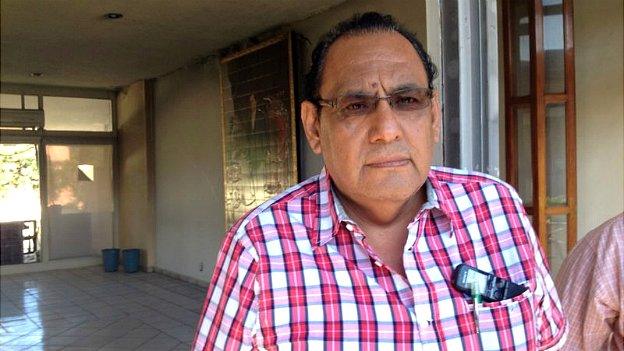
Oscar Antonio Chavez says his job is to run the town, not investigate his predecessor as mayor
But while he and his colleagues might be able to remove the mess inside the building, the institutional clean-up needed in Iguala will be much harder.
On street corners and around the main plazas are federal policemen and troops, now in charge of security in the municipality after scores of local officers were arrested over the kidnappings.
It is a similar story a little further down the highway in the village of Cocula, where the police force is alleged by Mexico's attorney general to have received the 43 students from their counterparts in Iguala.
From that point on, nothing more is known.
Mountain hideout
Hanging over the two towns is the spectre of mass graves discovered during the search for the students. At least 38 bodies have been found so far but the missing students are not among them, the authorities say.
Sergio Ochoa was lucky not to be among the missing. He used to share a tiny airless dorm with seven other friends in the Raul Isidro Burgos school in Ayotzinapa.
Sergio Ochoa Campos, one of the few survivors of the attack in Iguala, spoke to the BBC about his ordeal
Six of his roommates are among the 43.
"I ran and didn't hold back, because if I'd fallen back they would have got me," he explains on the basketball court of his trainee teachers' college, surrounded by banners and photos of the missing.
"There were 14 of us in total being chased [by the police] and we went on to somebody's land and hid on the mountainside for an hour among the trees and plants. We came down the next day at five in the morning."
Since then, Sergio has helped lead the calls for answers over his missing friends and justice for those who were killed on the night of 26 September in Iguala.
He shows me the Day of the Dead altar erected for the six who were killed by police that night. They include 22-year-old Julio Cesar Mondragon, known by his friends as Chilango, who had his face removed.
Yet they can't mourn the 43 missing from that night, with still no clear explanation of their fate.
"I feel impotent," Sergio says. "I'm angry. I want them back with us at school."
Vigilantes
In Iguala itself, some people are taking the law into their own hands.
Outside the municipal palace, a group of vigilantes is gearing up for another search. They have amassed about 100 volunteers to comb the countryside with pick-up trucks and shovels, excavating sites suggested to them by residents.
It is a search method based on tip-offs, hunches and rumours but they insist it is more effective than the Federal Police using helicopters and drones.
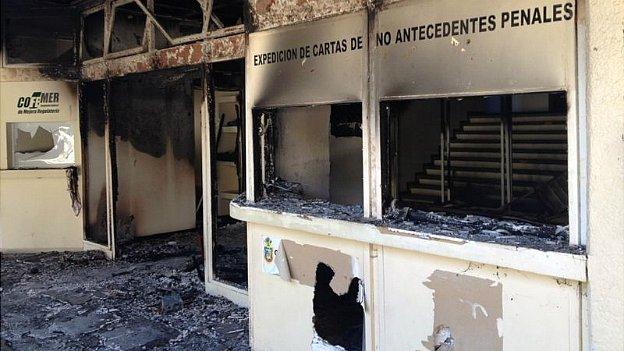
Offices have been burned by furious students
Julia Alonso is a mother of a disappeared son who vanished seven years ago from a different state. She has travelled to the state of Guerrero with an organisation she has formed called Citizen Forensic Science.
The group is working with the vigilantes to offer DNA testing on any bodies that might be found in the coming days.
"I know what it is to walk this path, I know everything [these parents] have to go through just to open a criminal case - just to do that, let alone find their missing."
As to the suggestion that she and the vigilantes are on course for a confrontation with the authorities over their overlapping operations, Julia is adamant: "This is the work of the state, but only where there's a responsible government."
Iguala, she says, cannot count on such a thing.
- Published6 November 2014
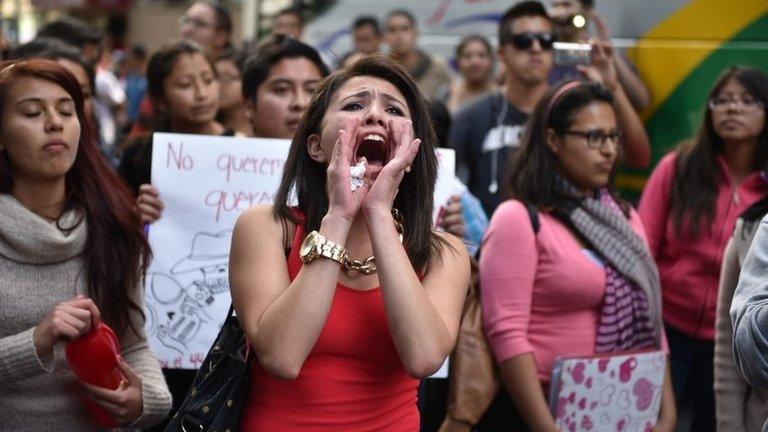
- Published4 November 2014
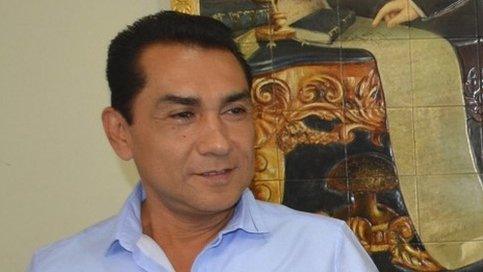
- Published29 October 2014
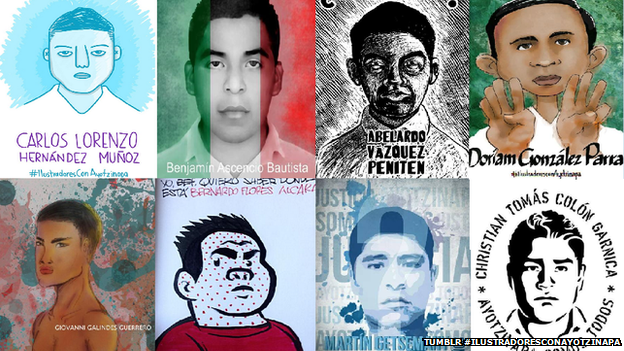
- Published23 October 2014
